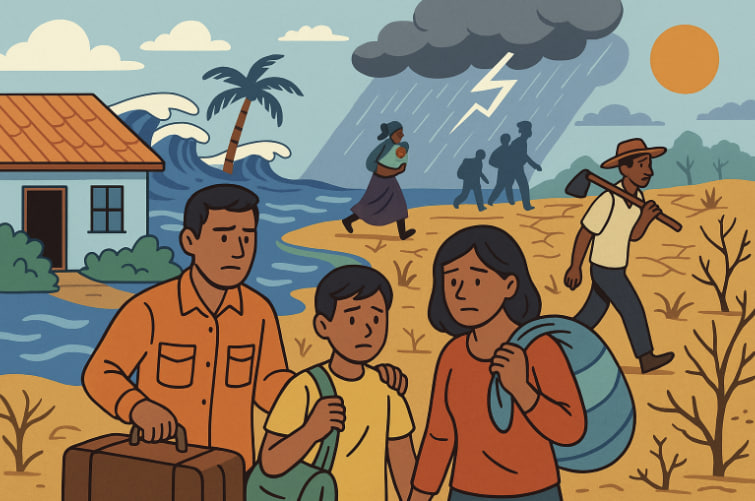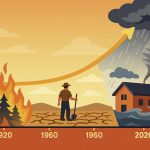As the planet continues to warm and extreme weather events become more frequent, climate migration is rapidly emerging as one of the most pressing humanitarian challenges of the 21st century. Millions of people are being displaced not by war or politics, but by rising seas, droughts, floods, and collapsing ecosystems. This article explores the causes, consequences, and global implications of climate-driven migration.
What Is Climate Migration?
Climate migration refers to the movement of people driven by sudden or gradual environmental changes linked to climate change. Unlike traditional migration, these displacements are often involuntary and can be either temporary or permanent.
People move:
- Within their own countries (internal displacement)
- Across borders (international migration)
Many climate migrants don’t fit the legal definition of refugees, leaving them without formal protection under international law.
What Triggers Climate Migration?
1. Sea-Level Rise
- Small island nations like Kiribati and coastal regions of Bangladesh and Vietnam are losing land to the ocean.
- Cities such as Jakarta, Miami, and Alexandria face regular flooding and land subsidence.
2. Drought and Water Scarcity
- East Africa, the Sahel, and parts of India experience severe water shortages, leading to failed crops and food insecurity.
- Entire communities must move when rivers dry up or groundwater is exhausted.
3. Extreme Weather
- Hurricanes, cyclones, wildfires, and floods can destroy homes and infrastructure.
- Repeated disasters discourage rebuilding and push families to relocate.
4. Desertification and Soil Degradation
- Arable land becomes infertile due to overuse, heat, and erosion.
- Rural populations are forced to seek survival in cities or abroad.
5. Melting Permafrost and Arctic Change
- Indigenous communities in Alaska, Canada, and Siberia must relocate as ground collapses under melting ice.
Who Is Most at Risk?
- Low-income populations with limited resources to adapt
- Farmers and fishers whose livelihoods depend on stable ecosystems
- People in coastal zones, river deltas, and drylands
- Children and the elderly, who are more vulnerable to climate stress
According to the World Bank, over 216 million people could become climate migrants by 2050 if emissions remain high.
Consequences of Climate Migration
Social and Political Strain
- Receiving regions may face housing shortages, unemployment, and resource conflicts.
- Tensions can grow between newcomers and host communities if support is lacking.
Urban Overcrowding
- Many migrants settle in slums or informal settlements, increasing exposure to health risks and disaster vulnerability.
Loss of Culture and Identity
- Entire communities may lose their language, customs, and heritage when relocated.
- Spiritual and ancestral ties to land are disrupted.
Legal and Human Rights Challenges
- Climate migrants are often not recognized under the 1951 Refugee Convention.
- They may be denied asylum, resettlement, or aid.
What Can Be Done?
1. Mitigation
- Reduce greenhouse gas emissions to slow climate change.
- Protect forests, invest in renewable energy, and reduce dependence on fossil fuels.
2. Adaptation Support
- Build climate-resilient infrastructure in vulnerable areas.
- Fund early warning systems and climate-smart agriculture.
3. Legal Reform
- Expand legal recognition and protection frameworks for climate migrants.
- Create safe and planned relocation programs.
4. International Cooperation
- Integrate climate migration into global climate and development policies.
- Provide funding for affected nations through climate finance mechanisms.
Conclusion
Climate migration is no longer a future threat — it’s already reshaping communities and countries. As the climate crisis deepens, the world must respond with empathy, planning, and policy. Climate migrants deserve not just shelter, but dignity, rights, and opportunity.
Glossary
- Climate migration – movement of people due to climate-related environmental changes
- Desertification – process by which fertile land becomes desert
- Internal displacement – migration within a country’s borders
- Permafrost – permanently frozen ground that’s now thawing due to global warming
- Climate resilience – the ability to recover from or adapt to climate impacts


